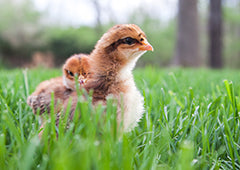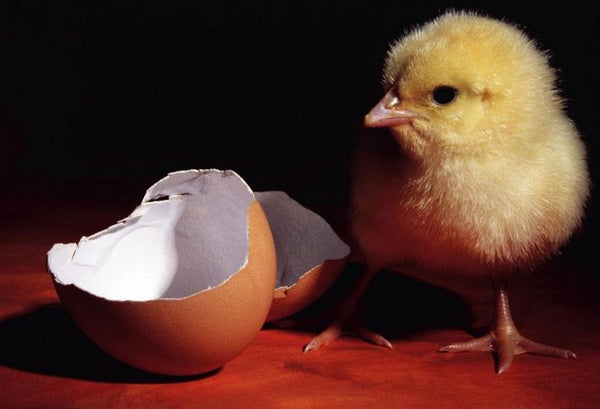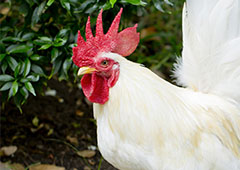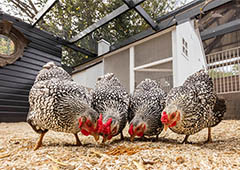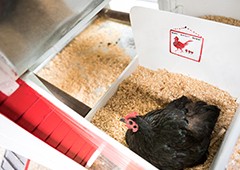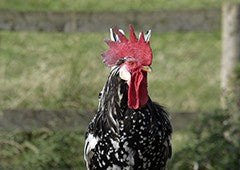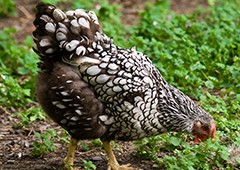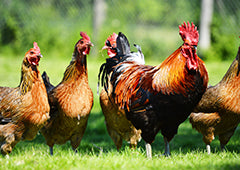Egg candling is a necessary part of the incubation process, that helps you identify whether the embryo is developing as it should, or whether something may have gone wrong and you have to remove it. It’s really easy to do, and can save you lots of trouble later on by spotting a dud egg early.
How often should I candle my eggs?
Egg candling should be done approximately three times during the incubation process. Doing it on day 4, day 10 and day 17 is plenty.
What do I need?
To candle eggs you need a couple of things:
-
A bright light that’s smaller than the diameter of the end of the eggs to be candled. A small torch or flashlight is fine, or you can buy specially made candlers if you’d prefer.
-
A dark room, such as the pantry or closed garage. It’s much easier to see inside the egg!
How do I candle the egg?
Hold or place the egg on an angle, and point the light source at the large end of the egg. If you can’t see anything, turn the egg slightly until you can see something inside. If you can’t see anything, then there may be a problem with the egg.
What am I looking for?
There are a number of things to look out for, which gives an insight into the health of your developing embryo:

DAY 4 CANDLING
-
If the embryo is healthy, you should be able to see a dark spot around the middle of the egg, with tree-branch like veins sticking out around it.
-
If unfortunately the embryo hasn’t survived, you will see a red ‘blood’ ring around the egg. You should remove the egg from the incubator immediately if you see this.
-
If the egg is clear and you can’t see anything at all, this means the egg was infertile, or was too old before incubating to be able to develop.

DAY 10 CANDLING
-
By this stage you should definitely be able to see a large, dark spot where the embryo has developed, as well as the veins spindling out from it.
-
Again, if you can see spots or rings of blood, the embryo has not survived - so remove the egg from the incubator as quickly as possible.
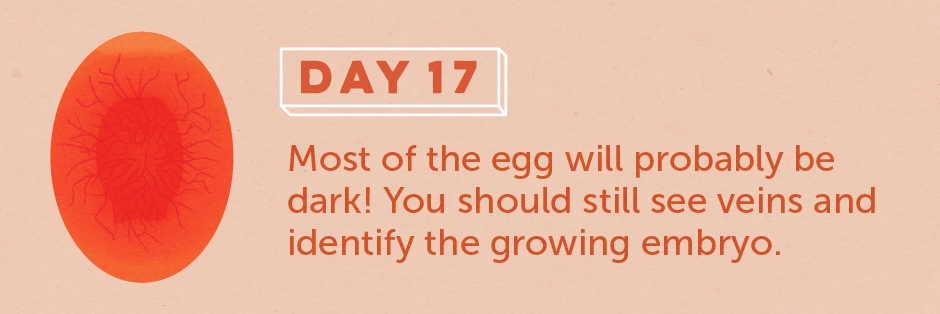
DAY 17 CANDLING
-
Embryo growth is virtually near completion, with the beak, feathers and claws having developed. Most of the egg will appear dark, however you should still be able to identify veins and the yolk.
-
Any blood rings or foul smells means you should remove the egg.
Other things to look out for:
-
Hairline cracks - you’ll be able to tell whether a shell has hairline cracks, as under candling they’ll appear as white veins around the outside. It is best to omit these eggs from being incubated, as they can allow bacteria to escape.
Candling is an easy, quick way to check on the progress of your developing embryos, and ensure the health of your incubating eggs. One of the best ways to keep your eggs developing healthily is by using a proper incubator, that monitors the temperature and humidity, and also turns the eggs for you.
There is so much to learn about bringing new life into the world. With the right knowledge and advice, it can be a joyful and eggstraordinary experience for the whole family. Nothing compares to seeing fluffy little hatchlings peck out of their shells. Getting to this perfect moment does come with a fair few challenges and risks which can be stressful and overwhelming, especially without the right information.
This is why I recommend our friends at Chickenpedia to all of my readers. They have created the brilliant Hatch A Plan course to help you successfully incubate and hatch happy and healthy chicks. Their course offers the best advice to ensure you build your knowledge to avoid tragic disasters, as these little ones can be so sensitive to temperature! You can learn about the conditions and equipment needed to confidently bring new life into the world.
As chicken keepers, we want to do an eggcellent job when caring for our feathered friends. Many chicken keepers struggle to handle chicken health or behaviour issues, especially in the first few years of having a flock. Chickenpedia have comprehensive online courses on everything you didn’t know you need to know and then some more! From raising baby chicks to feeding and behavior, you’ll find beginner-friendly courses that’ll give you the knowledge and confidence to successfully look after your chickens for years to come.
These courses are exclusive to members only, so flock to Chickenpedia today!





